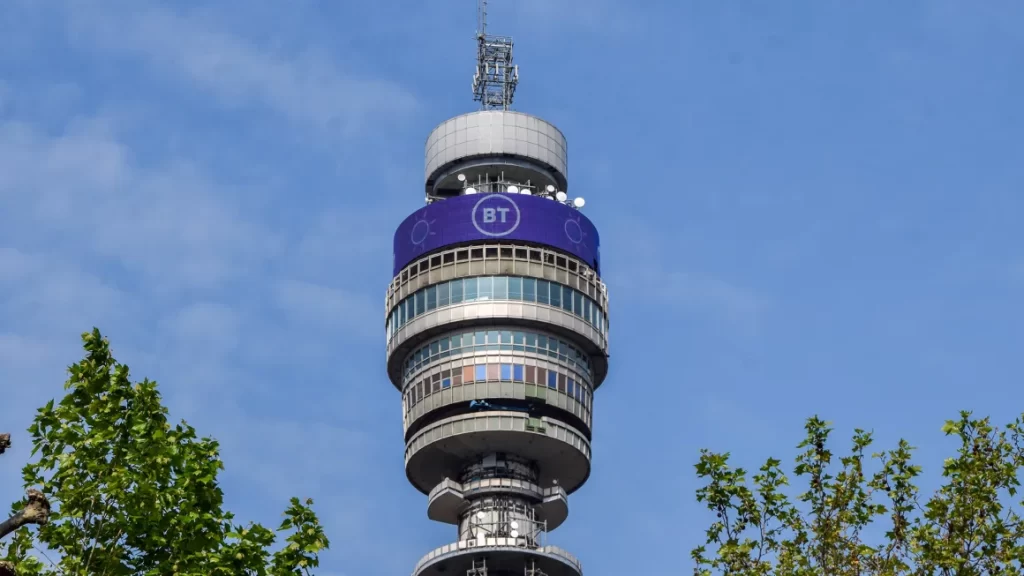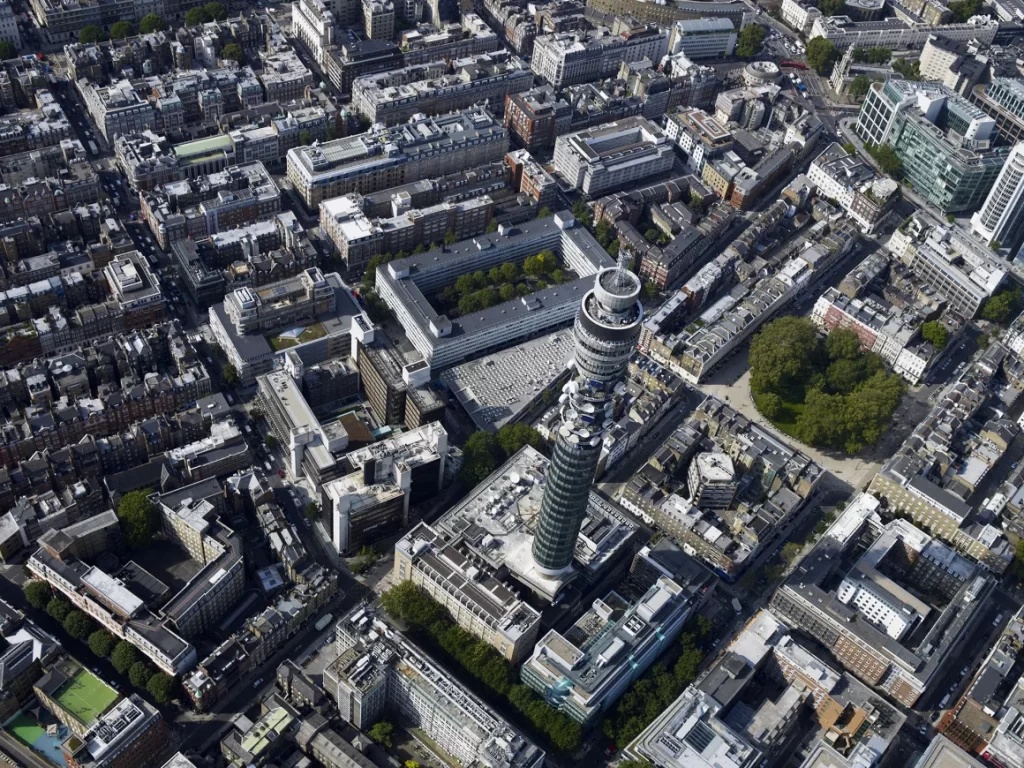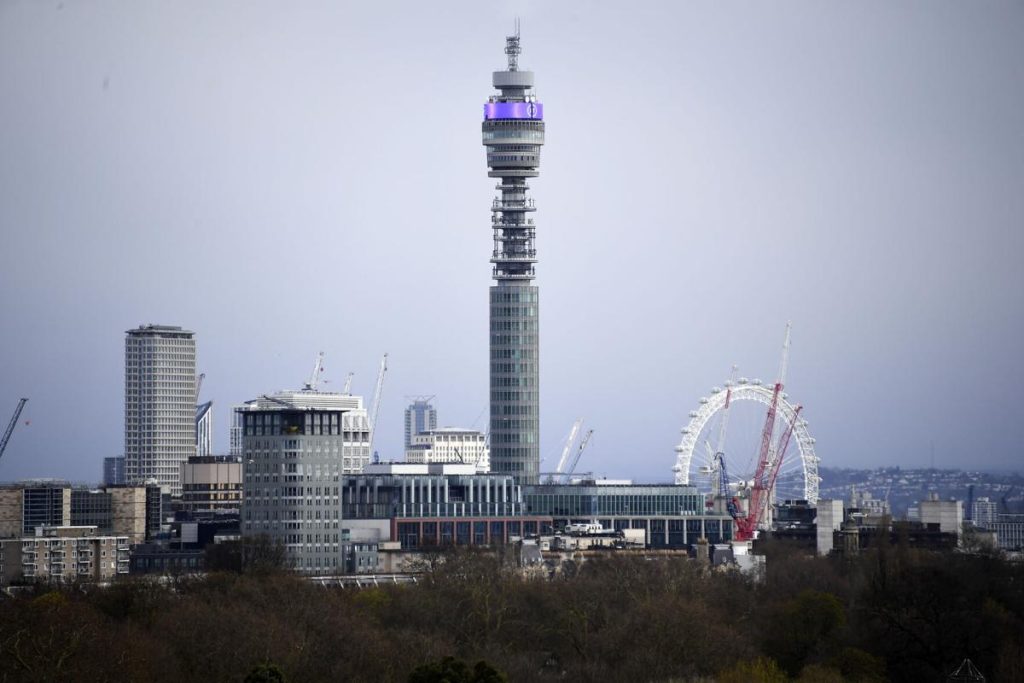News
Revitalizing London’s Skyline: BT Tower’s Grand Transformation into a Hotel Haven
In a move that promises to redefine London’s iconic skyline, the renowned BT Tower is undergoing a breathtaking transformation. Recently acquired by MCR Hotels for an impressive £275 million ($347 million), this historic structure is set to transition from a communication hub to a luxurious hospitality destination. The sale signifies more than a mere change in ownership; it’s a strategic shift that will see the BT Tower embrace a new role, opening its doors to the public and shaping the future of London’s architectural narrative. Let’s find out with nowglas.

Constructed in 1964 and initially known as the Post Office Tower, the BT Tower quickly rose to prominence, surpassing the Millbank Tower in Westminster to become the tallest structure in London. Nestled in the heart of Fitzrovia, central London, the tower was designed to relay microwave signals for telecommunications across the country, playing a crucial role in shaping the nation’s communication infrastructure. Over the years, it has stood as a symbol of technological advancement and a key feature of London’s evolving skyline.
As MCR Hotels takes the helm, the vision for the BT Tower extends beyond its original purpose, which saw it transmitting microwave signals for telecommunications. The tower’s microwave aerials became obsolete over a decade ago, paving the way for a transformation that aligns with contemporary needs and trends in adaptive reuse. With an acquisition price that underscores its historical significance, the BT Tower is poised to become a vibrant and inviting destination, inviting guests to immerse themselves in its rich legacy while enjoying the comforts of modern hospitality.
The sale, as confirmed by a statement from telecom company BT Group, emphasizes the importance of securing the BT Tower’s place as a London landmark for the future. The decision to repurpose the tower as a hotel represents a departure from its original function, marking a shift from being a communication powerhouse to becoming an integral part of London’s hospitality landscape. The move is not just a real estate transaction; it’s a commitment to preserving architectural heritage and adapting iconic structures for contemporary use.

Throughout its storied history, the BT Tower has borne witness to significant moments, from its opening ceremony in 1965 by then-Prime Minister Harold Wilson to its role as a public attraction with a revolving restaurant at the top. However, a tragic event in 1971, when a bomb exploded on the 31st floor, led to the closure of the tower to the public. Despite challenges, including the emergence of taller structures like the NatWest Tower and the Shard, the BT Tower has retained its status as a symbol of London’s skyline.
MCR Hotels, with an impressive portfolio of around 150 luxury hotels worldwide, including noteworthy projects like the TWA Hotel at New York’s JFK airport, is well-suited to spearhead the BT Tower’s metamorphosis. The company’s CEO and owner, Tyler Morse, draws parallels between this ambitious project and the successful transformation of the TWA Flight Center, emphasizing their shared status as world-renowned architectural landmarks. The TWA Hotel, a testament to MCR Hotels’ commitment to preserving and repurposing iconic structures, serves as a model for the BT Tower’s evolution.
The announcement of the BT Tower’s sale and its subsequent transformation into a hotel aligns with broader trends in adaptive reuse, reflecting a global shift towards preserving historic and iconic buildings. The BT Tower, with its rich history and architectural significance, presents a unique canvas for MCR Hotels to weave a narrative that celebrates its past while ushering it into a new era as a hospitality destination. This adaptive approach resonates with the growing appreciation for repurposing structures, breathing new life into them for generations to come.

Tyler Morse, in expressing his thoughts on the project, highlights the privilege of adapting the BT Tower, much like the TWA Flight Center, into a space that will be cherished and enjoyed by future generations. The vision extends beyond the physical transformation; it encompasses the creation of an immersive experience that seamlessly blends the tower’s historical legacy with contemporary luxury. This delicate balance is at the core of adaptive reuse – preserving the essence of a structure while aligning it with present needs and desires.
The metamorphosis of the BT Tower into a hotel represents not just a real estate venture but a commitment to revitalizing London’s architectural treasures. This ambitious undertaking holds the promise of a future where the BT Tower stands not only as a technological relic but as a vibrant and inviting destination, inviting guests to bask in its storied history while indulging in the modern comforts of hospitality. The fusion of past and present, history and luxury, is set to create a unique landmark that transcends time, adding a captivating chapter to the ever-evolving story of London’s skyline.
As the BT Tower undergoes this grand transformation, it joins the ranks of globally recognized structures that have found new purpose and relevance through adaptive reuse. The acquisition by MCR Hotels signifies not just a change in ownership but a strategic move to redefine the narrative of this architectural gem. The BT Tower’s journey from a communication powerhouse to a hotel haven is symbolic of the dynamic nature of cities and the importance of preserving their architectural identity while adapting to contemporary needs.
Discovering the Enchanting Greek Isles: A Tale of Luxury, Seclusion, and Celestial Beauty
The revitalization of the BT Tower comes at a time when the world is increasingly recognizing the value of repurposing historic structures. Adaptive reuse not only preserves the tangible history embedded in these buildings but also breathes new life into them, making them integral parts of modern urban landscapes. The BT Tower, with its imminent transformation, is poised to become a shining example of how architectural heritage can be celebrated and repurposed, contributing to the vibrant tapestry of London’s cultural and hospitality offerings.
In conclusion, the metamorphosis of the BT Tower into a hotel is a testament to the resilience of architectural landmarks and the foresight of those who recognize their potential for adaptive reuse. MCR Hotels, with its track record of transforming iconic structures, is well-positioned to carry forward this legacy. As the BT Tower prepares to welcome a new chapter in its storied existence, it invites locals and visitors alike to witness the seamless fusion of history and modernity, with the promise of becoming a timeless destination in the heart of London’s ever-evolving skyline.
See more: Venezuela’s Presidential Election: A Test of Democracy Amidst Controversy and Political Maneuvering

